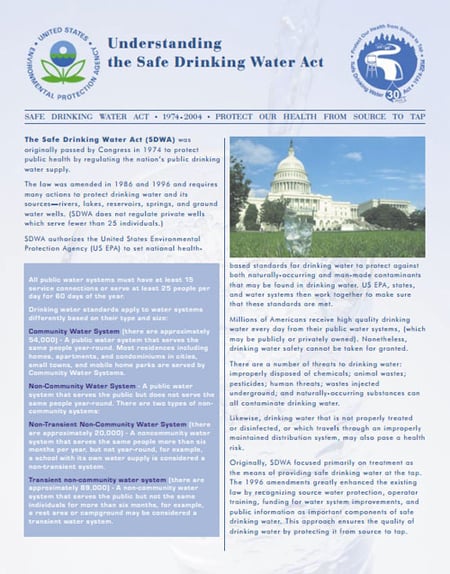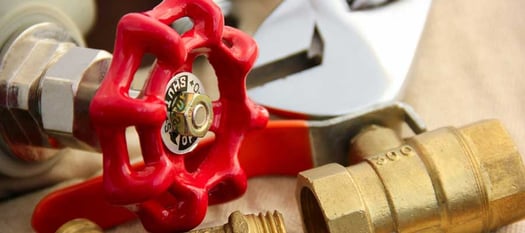With the formation of the EPA and public concern over lead exposure in the 1960s and 1970s, the plumbing and waterworks industry saw the rise of a new set of laws that regulated lead content in drinking water. As time has gone on, amendments and additional legislation has been passed, on both the state and federal levels, to further limit the amount of lead allowed in drinking water and plumbing systems. But what exactly is the difference between these standards and how do they affect your industry? Here are some more details:
Safe Drinking Water Act
Passed in 1974, the Safe Drinking Water Act was the first step towards regulating lead content in water supply systems. As a comprehensive approach to drinking water safety, it covers waterworks and plumbing systems from the collection point to the tap.  It exempted gate valves that were 2" or larger in diameter located in water distribution mains. Lead continued to appear in bronze and brass cast products to fill casting voids and acts as a lubricant for machining tools. Because the definition of a lead-free product was not tightly defined during this time and the allowable amount of lead was felt to still be too high at 8% for pipes and lead-bearing solder was still being used in systems, the act was amended by the Lead Contamination Control Act, but it was still felt that the limitation of lead in waterworks and plumbing systems was too high and not defined tightly enough. The act was further amended in 1996 when plumbing fittings and endpoint fixtures were required to be in compliance with lead leaching standards and no pipe, fitting or fixture that was not lead free was prohibited from sale.
It exempted gate valves that were 2" or larger in diameter located in water distribution mains. Lead continued to appear in bronze and brass cast products to fill casting voids and acts as a lubricant for machining tools. Because the definition of a lead-free product was not tightly defined during this time and the allowable amount of lead was felt to still be too high at 8% for pipes and lead-bearing solder was still being used in systems, the act was amended by the Lead Contamination Control Act, but it was still felt that the limitation of lead in waterworks and plumbing systems was too high and not defined tightly enough. The act was further amended in 1996 when plumbing fittings and endpoint fixtures were required to be in compliance with lead leaching standards and no pipe, fitting or fixture that was not lead free was prohibited from sale.
Reduction of Lead in Drinking Water Act
Because of the continued confusion over lead content and calculation standards, Congress passed the Reduction of Lead in Drinking Water Act (RLDW) in 2011. The law revised the definition of lead free

and required a lower maximum lead content of wet surfaces to 0.25% using a statutory calculation of lead content in pipes, fittings and fixtures, while eliminating the requirement for lead-free products to comply in the voluntary standards previously established. One of the sections of the law allowed for use of lead in commercial pipes, fittings and fixtures that were used only for non-potable water services, such as that used in manufacturing, industrial and similar applications.
Individual State Laws
- California preceded national law in the under 0.25% weighted average and required independent third-party ANSI-certified testing of lead-free products as well as random testing of fittings and fixtures to ensure compliance.
- Maryland chose to add laws that banned more than 8% of total dry weight in materials excluding solder.
- Louisiana added exemptions for items purchased by municipalities prior to a particular date and loosened the prohibition of lead-bearing materials under particular circumstances.
- Vermont also preceded national law with standards that have now fit into the existing RLDW requirements.
Of course, one of the easiest options for having a waterworks system that is in compliance with new lead-free regulations is to simply use lead-free fittings in the first place. At Red Hed Manufacturing, all our brass is lead free, providing you with the perfect materials for your next project, repair or replacement. Contact us today for more details about how we can work together for a lead-free future.










